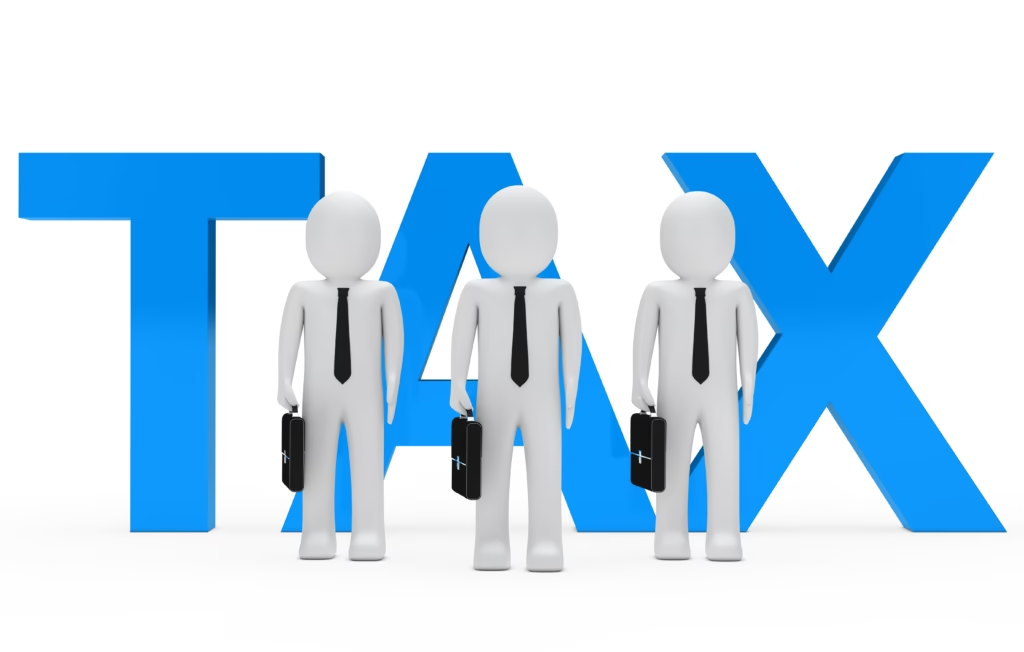What is the Major Difference Between the Old vs New Tax Regime?
Table of Contents
Introduction
Understanding how taxes work is important for every Indian taxpayer, whether you are salaried, self-employed, or running a small business.
Since the government introduced the New Tax Regime, many people are confused about whether to choose the Old Tax Regime or the new one.
The choice affects how much tax you pay, what deductions you can claim, and which ITR form you should file, like ITR 1, ITR 2, ITR 3, or ITR 4.
The Old Tax Regime offers many deductions under sections like 80C, 80D, HRA, home loan interest, and more. It suits people who actively invest in tax-saving options.
On the other hand, the New Tax Regime has lower tax rates but removes most deductions and exemptions. It’s simple, but it may not benefit everyone.
We’ll also explore how this choice affects Presumptive Taxation (like ITR 4) and which regime might be better for MSMEs, professionals, and freelancers.
Let’s begin.
Here’s a detailed and simple explanation of the first question:
1. What is the basic difference between the old tax regime and the new tax regime in India?
The main difference lies in how your taxable income is calculated and what benefits you can claim.
Under the Old Tax Regime, you are allowed to reduce your taxable income by using many deductions and exemptions.
For example, you can claim benefits under:
- Section 80C (for investments like LIC, PPF, ELSS, etc.),
- Section 80D (for health insurance),
- House Rent Allowance (HRA),
- Home loan interest, education loan interest, and more.
This means if you plan your finances well, you can reduce your total income on paper and pay less tax.
In contrast, the New Tax Regime offers lower tax rates but does not allow most exemptions or deductions.
So, you pay tax on your full income, without subtracting your investments or expenses.
It’s simpler and requires less paperwork, but it may lead to a higher tax bill if you already claim many deductions in the old system.
Here’s a quick example:
Let’s say you earn ₹10 lakhs a year.
- In the Old Regime, if you claimed ₹2.5 lakhs in deductions, you would be taxed on ₹7.5 lakhs.
- In the New Regime, you cannot claim these deductions, so your taxable income remains ₹10 lakhs, but the tax rates are lower.
In short:
- Old Tax Regime = More planning, more paperwork, but big savings if you invest wisely.
- New Tax Regime = Lower tax rates, no deductions, easier to file.
Choosing the right regime depends on your income, your expenses, and how well you use the exemptions in the old regime.
Here is the detailed answer in easy conversational English:
2. Which ITR forms are applicable for both old and new tax regimes?
No matter which tax regime you choose, old or new, the type of ITR form you use depends on your income source and business structure.
Let’s break this down clearly.
ITR 1 and ITR 2 – For Salaried People or Those with Passive Income
- If you earn a salary, have some interest income (like from savings accounts or fixed deposits), or receive a pension, then:
- You will use ITR 1 (if total income is up to ₹50 lakh and no business income).
- Or ITR 2 (if income is above ₹50 lakh or you also have capital gains or rental income from multiple houses).
- You will use ITR 1 (if total income is up to ₹50 lakh and no business income).
- These forms can be used under both old and new tax regimes.
So, salaried taxpayers can freely choose between the old and new regime and file using ITR 1 or ITR 2.
ITR 3 – For Business Owners or Professionals
- If you’re a doctor, consultant, trader, or run any business without opting for presumptive taxation, you must file ITR 3.
- This applies whether you’re under the old regime or the new regime.
- You will also use this form if your income is above ₹75 lakh and you cannot use the presumptive scheme.
So, business owners and professionals have to use ITR 3 for both regimes if they want to declare actual income and expenses.
ITR 4 – For Presumptive Taxation
- If you choose presumptive taxation under Section 44AD, 44ADA, or 44AE, you will file ITR 4.
- This form is made for small businesses and professionals who want a simple way to file taxes without maintaining full books.
- You can choose either the old or the new tax regime with this form.
This is very useful for Healthcare MSMEs like clinics, labs, and pharmacies who prefer simple tax filing.
ITR 5 – For Partnerships and LLPs
- If your business is a partnership firm or an LLP, then you need to file ITR 5.
- These entities can also choose between the old and new tax regimes — but the choice is made at the entity level, not by individual partners.
- Once the partnership chooses a regime for the year, it applies to the entire firm.
Summary
ITR Form | Who Uses It | Regime Options |
ITR 1 | Salary, pension, and interest income | Old or New |
ITR 2 | Salary + capital gains/rental income | Old or New |
ITR 3 | Business/professional income (actual books) | Old or New |
ITR 4 | Presumptive Taxation (44AD/ADA/AE) | Old or New |
ITR 5 | Partnerships and LLPs | Old or New (firm-level choice) |
So, you can use the same ITR forms for both tax regimes; what matters is your income type, not just the regime.
Here is a simple and detailed explanation of how tax slabs and rates compare in the Old vs New Tax Regime for FY 2024–25:
3. How do tax slabs and rates compare in the old vs the new regime?
The main difference between the old and new tax regimes is:
- The old regime allows you to claim deductions and exemptions (like 80C, HRA, health insurance).
- The new regime offers lower tax rates but does not allow most deductions.
Let’s look at the tax slabs for both.
Old Tax Regime (With Deductions Allowed)
Income Slab | Tax Rate |
₹0 – ₹2.5 lakh | 0% (No tax) |
₹2.5 – ₹5 lakh | 5% |
₹5 – ₹10 lakh | 20% |
Above ₹10 lakh | 30% |
Note: You can claim popular deductions under this regime:
- ₹1.5 lakh under Section 80C (like LIC, PF, ELSS)
- ₹25,000 to ₹1 lakh for health insurance under 80D
- HRA, Standard Deduction, Home Loan Interest under 24(b)
New Tax Regime (No Deductions, Lower Rates)
Income Slab | Tax Rate |
₹0 – ₹3 lakh | 0% |
₹3 – ₹6 lakh | 5% |
₹6 – ₹9 lakh | 10% |
₹9 – ₹12 lakh | 15% |
₹12 – ₹15 lakh | 20% |
Above ₹15 lakh | 30% |
Under this regime, you cannot claim most deductions, except:
- Employer NPS Contribution (80CCD(2))
- EPF contribution by the employer
- Standard deduction of ₹50,000 (available from AY 2024–25 onwards)
Which One Saves More Tax?
- If you have many deductions, the old regime might reduce your tax burden more.
- But if you don’t have many tax-saving investments, the new regime might work better due to lower rates.
Quick Example
Let’s say you earn ₹10 lakh per year:
- Under Old Regime (with ₹2 lakh deductions): Taxable income = ₹8 lakh
- Tax = ₹75,400 (after rebate and cess)
- Tax = ₹75,400 (after rebate and cess)
- Under New Regime (no deductions):
- Tax = ₹60,000 (after rebate and cess)
- Tax = ₹60,000 (after rebate and cess)
So, the new regime saves more only if you have few or no deductions.
In summary, the old regime gives more flexibility to reduce tax, while the new regime offers simpler and lower rates for those who don’t want the hassle of tracking deductions.
4. Can business owners or freelancers under presumptive taxation choose the new regime?
Yes, business owners and freelancers using presumptive taxation under Section 44AD or 44ADA can choose the New Tax Regime in India.
But before doing so, they should understand what they are gaining and what they are losing.
Who Can Use Presumptive Taxation?
- Small business owners under Section 44AD
- Professionals like doctors, consultants, and architects under Section 44ADA
- They usually file their tax return using ITR-4
Can They Opt for the New Regime?
Yes, they can opt for the New Tax Regime. There is no restriction on presumptive taxpayers using ITR-4 from choosing the new regime.
What Do You Lose Under the New Tax Regime?
If you switch to the New Tax Regime, you will:
- Lose all common deductions like:
- Section 80C (LIC, ELSS, PF)
- 80D (Health insurance)
- Interest on housing loan
- Section 80C (LIC, ELSS, PF)
- Standard deduction of ₹50,000 is now available (from FY 2023–24 onward), but other benefits are gone
This means your presumptive income (like 50% of receipts under 44ADA or 8%/6% under 44AD) will be taxed without any additional deductions.
Should You Choose the New Regime?
It depends.
- If you don’t have any major deductions, the new regime might save tax due to lower slab rates.
- But if you invest regularly in tax-saving options, the old regime will likely give you better tax savings.
Example
Suppose you are a consultant earning ₹20 lakh a year:
- Under 44ADA, 50% = ₹10 lakh is taxable
- If you claim deductions under old regime (₹2 lakh total), taxable = ₹8 lakh
- If you choose a new regime = ₹10 lakh is taxable directly
Here, even though the tax slab in the new regime is lower, the old regime may offer more savings because you reduce taxable income with deductions.
Final Tip
Always compare both options before filing.
You can calculate tax under both regimes using any free online tax calculator and then decide which one is better for your situation.
5. What are the pros and cons of switching to the new tax regime for salaried or MSME taxpayers?

Switching to the New Tax Regime sounds simple, but it’s important to know both the good and bad sides, especially if you’re a salaried person or an MSME taxpayer.
Let’s break it down in easy terms.
Pros of Choosing the New Tax Regime
- Lower Tax Rates
The new regime offers reduced slab rates. So if you don’t have many investments or deductions, this can help you save tax. - Simple Filing
No need to collect proof of investments or calculate deductions. It’s straightforward, just total income minus standard deduction, and pay tax. - No Need to Plan Investments for Tax Saving
You are free to use your money where you want. No pressure to buy insurance or invest just to save tax. - Useful for New Professionals or Startups
If you’re just starting out and not claiming HRA or home loan interest, this may reduce your tax hassle.
Cons of Choosing the New Tax Regime
- No Deductions Available
You lose out on major tax-saving sections like:- Section 80C (PF, LIC, ELSS)
- Section 80D (Medical insurance)
- Home loan interest
- HRA (House Rent Allowance)
- Section 80C (PF, LIC, ELSS)
- Not Ideal for High-Investment Individuals
If you already invest in PPF, pay insurance, or have home loans, the old regime may offer much better savings. - No Custom Tax Planning
Under the new regime, there’s not much room to reduce taxable income through smart planning.
Example: Salaried Employee
- Salary: ₹12 lakh/year
- Deductions claimed under the old regime: ₹2.5 lakh
- Taxable income = ₹9.5 lakh (lower tax)
Under the new regime:
- Salary = ₹12 lakh
- Only standard deduction of ₹50,000
- Taxable income = ₹11.5 lakh (higher tax)
Unless you have no deductions, you may pay more under the new regime.
Example: MSME Owner
If you’re a small business owner without many deductions and don’t want to manage too much paperwork, the new regime might help.
But if you claim deductions for business expenses, housing, or insurance, sticking with the old regime may be better.
Final Thought
The New Tax Regime is best for people who:
- Don’t have home loans
- Don’t claim major deductions
- Want simple and fast filing
But if you already have deductions or want to use tax planning, the Old Tax Regime may help you save more.
Always use a tax comparison calculator before choosing.
You can switch every year (except for business filers under presumptive tax), so compare before you file.
6. How can taxpayers decide whether to choose the old or new tax regime while filing ITR in 2025?
Choosing between the old tax regime and the new tax regime while filing your ITR in 2025 might feel confusing.
But don’t worry. You can decide easily by following a few simple steps.
Let’s break it down.
Step 1: Understand Your Income Type
Are you:
- A salaried employee?
- A freelancer or consultant?
- A business owner filing under presumptive taxation?
Your income source helps decide how much benefit you get under each regime.
For example, salaried employees often claim HRA, 80C, or home loan deductions under the old regime.
But a new freelancer may not use these and can benefit more from the new regime.
Step 2: Calculate Total Deductions You Can Claim
In the old tax regime, you could claim deductions under:
- Section 80C (PPF, LIC, ELSS, tuition fees)
- Section 80D (medical insurance)
- HRA and home loan interest
- Education loan interest, etc.
Add all the deductions you’re eligible for. This gives you the total deduction amount.
Step 3: Use a Tax Calculator
Now, use any reliable income tax calculator available online.
Many are free and easy to use. Just enter:
- Your income
- Deductions
- Type of income (salary, business, etc.)
The calculator will show:
- Tax payable under the old regime
- Tax payable under the new regime
Whichever option shows lower tax, go with that.
Step 4: Special Case for Business Income
If you’re a business owner or freelancer under presumptive taxation (Section 44AD or 44ADA) and you choose the new regime, you can’t switch back easily.
You’ll need to stick to it for the next few years.
So be careful. If your deductions are high, the old regime might be better.
If you want simple filing and have no big deductions, the new regime could be better.
Step 5: Get Professional Help if Needed
If you’re unsure, especially if you have:
- Business income
- Multiple income sources
- Rental property, or
- Complex deductions
It’s wise to consult a CA (Chartered Accountant).
They can guide you based on your actual numbers.
Final Advice
You don’t need to guess. Just:
- List your deductions
- Use a calculator
- Compare both options
- Choose the one that saves you more tax
And yes, you need to select your regime while filing the return; there’s a check box for that in your ITR form (like ITR 1, ITR 3, ITR 4, etc.).
Smart comparison = Smart tax savings.
Conclusion
Understanding the difference between the Old vs New Tax regimes is crucial for smart tax planning in 2025.
The old regime gives you deductions like 80C, HRA, and home loan interest.
The new regime gives you lower tax rates but no deductions. MSMEs, freelancers, and salaried individuals should evaluate which one saves more.
Use tax calculators. Compare actual tax outgo.
If you’re under Presumptive Taxation (like ITR-4), be careful before switching, as it’s not easy to revert.
For most, the best regime depends on your income and how much you invest in deductions.
FAQ
- Can I switch between old and new tax regimes every year?
Yes, if you are a salaried individual. But if you have business income under presumptive taxation, switching is restricted.
- Which regime is better for salaried individuals?
If you claim many deductions like 80C, 80D, HRA, the old regime is likely better. If not, try the new regime with lower rates.
- Can freelancers filing ITR-4 use the new regime?
Yes, they can. But once you opt in, you may not be allowed to switch back easily. Evaluate before deciding.
- Do I need to declare my choice in the ITR form?
Yes. Every ITR form has a section where you need to choose whether you are opting for the old or new tax regime.
- Are tax rates lower in the new regime?
Yes. The new regime offers more tax slabs with lower rates. But you cannot claim any exemptions or deductions under it.
Also Read,
- The Ultimate Guide: Working Capital Loans for Small Business (MSMEs) in 2025
Understanding the Impact of Payment Terms on Working Capital for Clinics
How Poor Inventory Management Hurts Working Capital in Pharmacies.
Want a Better Business Credit Score? Small Pharmacies Can Now Use UPI & Cards to Build It
Want a Better Credit Score? Use Small Daily Payments to Build Your CBIL (For Clinics & Pharmacies)
Case Study:How a Small Clinic Improved Its Working Capital Management





